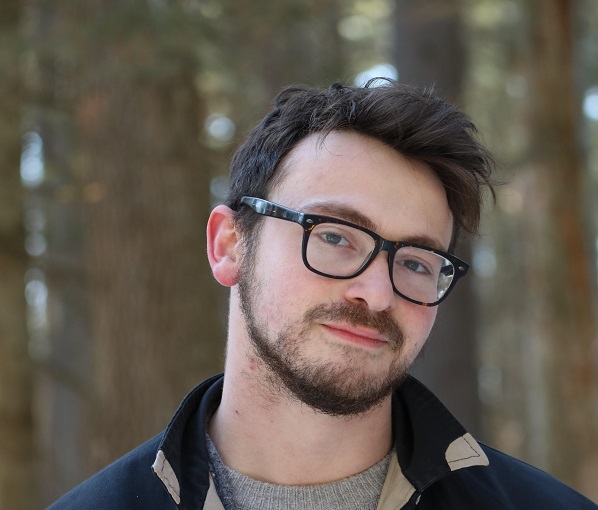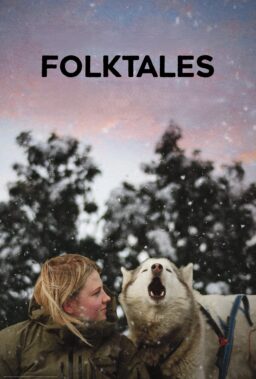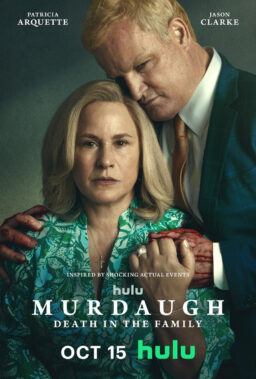With their surreal and shimmering “I Saw the TV Glow,” Jane Schoenbrun has made one of the year’s defining films—an eerie and overwhelmingly potent meditation on teenage dysphoria, repression, and representation, in which two high school classmates obsess over a late-night TV series, only for one to disappear completely after its distressing finale.
Growing up in the suburbs in 1996, Owen (played as a seventh grader by Ian Foreman, then from high school on by Justice Smith) befriends an older classmate, Maddy (Brigette Lundy-Paine), who soon introduces him to “The Pink Opaque,” a young-adult TV series in which two telepathically linked teenage girls, Isabel (Helena Howard) and Tara (Lindsey Jordan, aka alt-rock musician Snail Mail), battle monsters in a dangerous supernatural realm.
Owen and Maddy identify closely with these characters and find in the series an escape from harsh reality; but once “The Pink Opaque” is canceled, its storyline unresolved, Maddy vanishes into the night, leaving her television set burning in the backyard. At a loss to navigate the parts of himself he’d understood most refracted through their parasocial relationship with the series, Owen finds himself trapped between hazy paths of self-discovery and self-denial as the lines between fantasy and reality start to blur.
Schoenbrun—a queer, trans, non-binary filmmaker who uses they/them pronouns—intends the deeply personal “I Saw the TV Glow” (now in theaters, via A24) as a metaphor for the “egg crack,” that moment at which a person realizes they are trans, though Owen lacks the language to articulate his queerness and in that absence of self-knowledge becomes more isolated and dissociated as he grows, despite the gnawing sensation that something is deeply wrong.
Schoenbrun’s micro-budget feature debut, “We’re All Going to the World’s Fair,” was also a study in the limiting and liberating power of media obsession, following a lonely teen (Anna Cobb) who appears to undergo a strange transfiguration as part of an online role-playing horror game. And their other projects—“collective:unconscious,” for which they invited five filmmakers to adapt each other’s dreams, and “A Self-Induced Hallucination,” a collage-style documentary about the Slenderman mythos—have, like “TV Glow,” traced intangible connections between the media we consume and the identities we construct.
With “TV Glow,” they go even further, illuminating artifacts of adolescence as possessing both nostalgic allure and a haunting presence. Schoenbrun strikes that same balance aesthetically, with Eric Yue’s gloomily phosphorescent cinematography, Alex G’s ghostly score, and a killer soundtrack of glitchy, fuzzed-out ’90s tributes (from indie icons like Caroline Polachek, yeule, and Florist) all merging to form a hallucinatory atmosphere of neon-chalked streets, electrified static, and stifled metamorphic potential.
While recently in Chicago to present “I Saw the TV Glow” at a sold-out screening for the Chicago Critics Film Festival, Schoenbrun spoke with RogerEbert.com about nocturnal energy, recurring dreams, and what lies within and beyond the world of the screen.
This interview has been edited and condensed.

I wanted to start out by asking you about the nocturnal realms of “I Saw the TV Glow,” which carry on from your previous feature, “We’re All Going to the World’s Fair,” and suffuse this suburban setting with a sense of ever-present dread but also lingering possibility.
I think that’s exactly right. Growing up in the suburbs, your world is very small and curated, in a lot of ways, and the spaces that you cling to, what you’re drawn to, if you’re queer, are different from the white-picket-fence, fresh-mowed-grass vibes that the suburbs are known for. You find these hidden places, and you find spaces that are imbued with magic, that from the outside can feel sinister but to you, as a kid, feel beautiful.
By 14, I was going to punk basement shows and spending as much time as I could in the video store, bumming around the streets of my town, hanging out behind Chinese restaurants, and smoking weed with my friends. It was an existence of trying to find something romantic on the margins or the dark edge of town. That’s how my gaze of what could be possible or beautiful developed.
And then, the other major influence there was media, gravitating especially—as the movie talks about—towards these kind-of-scary, kind-of-romantic TV shows that have a very nocturnal energy to them, gravitating towards the Smashing Pumpkins’ Mellon Collie and the Infinite Sadness and its aesthetics of nocturnal suburban teen angst fantasia, where the moon is both beautiful and sinister and always gazing down at you with its weird, Méliès-style gaze.
I’m a product of where I came from, but I’m also a product of this longing to escape into the night, a little bit. When I make a movie, for my own sake, I’m just trying to make something that I can be obsessed with enough to put in the years of work that are required, and so I’m trying to build landscapes, tableaus, energies, and tones that I want to live within myself.
In a previous interview, you discussed your admiration for The Poetics of Space, by the French phenomenologist Gaston Bachelard, and his idea that maps of our childhood homes exist differently in our memories than they do architecturally, of “emotional maps” that offer new possibilities for imagining space, informed by our perceptions and experiences. In envisioning “I Saw the TV Glow,” which centers a character unable to fully express or realize their internal states, how did that idea of an “emotional map” with restricted or unexplored areas inform your world-building?
One of the early fixations with this film was a recurring dream that I had about this field that was behind my high school football field in childhood. We moved across town after third grade, but the first house I lived in, in the suburban town that I grew up in, was literally right next to the high school. It was the closest possible house to the high school, half a block away. I would spend so much time in high school at this beautiful football field, walking on the track at nighttime with friends. It was one of these spaces that I spent a lot of time in, and it was the postcard hallmark of the town. Right behind the football field, there was a short decline down to a smaller baseball field, which was perpetually muddy and overgrown with weeds, dank and hidden—“the field behind the field,” as I came to think of it.
This space kept showing up in my dreams, and I asked myself, “Why is this place looming so large?” And I realized it was the idea of the hidden places, the field behind the field in a more expansive sense, that I was searching for in making the film. It was part of that conversation of clinging to the darkness on the edge of town and finding comfort in it, seeking it out as a young person. In many ways, “The Pink Opaque” is that for the characters in the movie.
My emotional map for this movie changes so much. There were early versions of this movie that on a narrative level had absolutely nothing to do with what you’re watching when you actually watch “I Saw the TV Glow.” So much of the work of developing the film, for me, isn’t necessarily about developing the plot, the hero’s journey, or whatever. It’s about developing these different realms that the film is dancing between, which The Poetics of Space talks about, and feeling that evolve organically over the several years that I was developing the project, until I knew that the arcade was going to feel like more of a marginal, colder space, versus the football field, versus the basement, versus the bedroom. This work is so key and core to my process. In this case, I was literally in spaces that are childhood spaces. This is a film very explicitly about childhood, so I dialed up this work towards 11.

In considering your gaze upon those spaces as a queer filmmaker, and the sensations of discomfort Owen feels within those spaces, do you think there’s a skepticism inherent to your vision of this suburban realm or see that unease as linked to a trans gaze?
It’s what Maddy says, early in the film, when she talks about the high school on election night; she says it’s special, that the school gets transformed into something else. I do think there is a queer application to this idea of longing for high school, for daily life, to transform or mutate or give way to something that’s different.
One word we could use for it is queering: we’re queering the high school by coming there late at night, when the space is completely decontextualized, with the hallways being long and dark, carrying some mystery or shadow that’s missing in the daytime. The longing for that is a very queer and especially trans longing, because it’s the longing for transformation.
As a kid, I loved Halloween. There’s this walking path at the local nature preserve, where people would dress up, jump out, and scare you as you walked through the woods. I looked forward to this so deeply, because it was like life was giving way to something scary and dangerous, but in a very mediated and safe way. It was controlled chaos but, beyond that, it was about possibility. In my tiny little child brain, I don’t know that I ever consciously understood it as such, but it was the possibility that the world could give way and that the very tight, presupposed structures I was being told had to always exist actually, maybe, didn’t.
The film reflects on this throughout and is reflecting on not just a space like a high school or a goth club, where you can find your fellow weirdos on the edge of town, but also on the way in which, through media, television, and music, you can catch whiffs of this possibility for transformation as a young person, from the signals that are beaming towards you.
For both Owen and Maddy, coming to terms with their identities, “The Pink Opaque” serves this purpose, and they discover parts of themselves through Tara and Isabel, its teenage protagonists. The evolving relationship between our media consumption and our self-identification has been a frequent preoccupation of yours, and I’m curious about how or whether you sought to create a collective identity of sorts between these actors.
The actors were asking for it, and I told them no, but I didn’t do so much of, “Justice and Helena, let’s sit down and get your facial tics figured out.” It feels like what the film is talking about, in terms of identification, is more spiritual or ephemeral. Even in tracking Ian Foreman, who plays young Owen, and having Ian’s performance versus Justice’s performance, it didn’t really worry me so much to track physicality, because there’s such a pronounced jump, and I think it’s one of the things that the film’s trying to talk about. That happens, for a person who’s in the wrong body when puberty hits.
And perhaps, Ian’s ease as Owen—and his ability to exist in the world in this dreamy, interior way that we see him floating within—versus Justice’s unease is less about the similarities and more about the contrasts. I think, similarly, with Helena playing Isabel, that’s the idealized version of even who Ian can’t be, in the role of young Owen. It’s also all so caught up with fictionalization, and this idea of seeing yourself—or not even yourself, but a glimmer of a possibility of a kind of energy that you’ve longed to inhabit, but that feels so far away—this is what Owen is feeling when he sees Isabel on the screen, in a way that he doesn’t quite understand. It was a lot less about doing that puzzle in terms of emphasizing similarities between the characters, and it was much more about accentuating the differences but also knowing that everything was held in this continuum.

Can you discuss this fictionalization and obsession with media as related to the film’s play with dissociation, the idea of stepping outside of yourself to escape or reimagine identity? Between both “I Saw the TV Glow” and “We’re All Going to the World’s Fair,” you’re exploring the power of that dissociation from self that the screen allows, the distance it provides for you to explore, play, and negotiate a more mediated identity.
For sure. There’s a line that’s repeated in both films, that Maddy says during the monologue in “TV Glow,” that Casey says when she’s recording her first selfie-vlog out in the snow in “World’s Fair.” They both talk about feeling like they’re watching themselves on a TV from across the room. When I stumbled into the TV or the screen as metaphor, or into using the screen in this medium that obviously involves the screen, to talk about distance between one’s self and the self that is being presented to the world, I became really interested in the idea of that articulating something that’s dissociative and, in my case, tied to my experience of dysphoria and transition.
Specifically, I became really interested in that experience feeling like closing this gap. As Maddy talks about, eventually, the screen disappears, and this is when she can become, in a way that feels like inhabiting a world that feels realer than what she had been told was the real world. Obviously, I’m speaking about this while coded with various genre cues and metaphors, but I’m trying to express a thing that I’m experiencing—and still experiencing—and that I think probably will be a lifelong experience, and which you could say is an experience of transition but that you could say also is just an experience of healing that gap of dissociation.
I think other people in the world can relate to a feeling of dissociation, even if they aren’t trans, and feeling this distance between the self they feel internally and the self they present to the world. In the case of being born into it and given the gender that is the incorrect gender, this is an extreme example of that dissociation, but I think the film and all of my work to date has been talking about that gap between a reality that feels fictional, and a fiction that feels real, closing.
All your work has this sense of liminality—in terms of not only identity but also atmosphere and medium. In the world of “TV Glow,” you capture this coexistence of possible and impossible, real and unreal, that often feels like it’s deconstructing the notion of an objective reality itself. Can you talk a little about that?
It’s one of the joys of the medium. Realism in film is a fool’s errand, because there’s no such thing as realism in a film. It’s a film. Everything, to some degree, is interacting with artifice and also with the tools at our disposal to trick you into thinking you’re watching something real. I think I step into the space of making a narrative film with that understanding, and it becomes about play, and it becomes about play in collaboration and interaction with an audience I’m having a conversation with about exactly this nebulous artificiality or unreality that the medium is just intrinsically predicated on.
Beyond that, there’s the idea that reality is constructed—which it is and isn’t. It’s not a binary reality, outside of film, but this reality, in this room right now, is quite constructed. Human beings have constructed so many of the norms and presuppositions that we take as reality every day. And, also, there are certain things that we didn’t do that for. The world is also real, and we exist on a plane of existence that has a capital-R reality to it.
I think the experience of unpacking and uncovering something that felt ephemerally wrong for the first 30 years of my life—and understanding the ways in which the sides of reality that weren’t really real, and the sides of reality that are really real had combined to trap me in a space and a body and a gender that didn’t serve me—then beginning that process of slowly healing that unreality, that’s informing my gaze on all of this as well, hopefully in a way that—as I continue to make work—will reveal itself to be slowly emancipatory.
The process of gender transition requires a reclamation of reality as something that can be malleable and something that can be in one’s own control to begin to change; otherwise, it’s a failed pursuit from the start. I think my work, and probably that of a lot of other trans people as well, is very sensitive to that question and that idea of reality being something that can be transformed, to a certain degree at least. It’s so deep and inherent in the work and in my own life, and a theme that feels at the heart of everything that has become beautiful about my existence.
“I Saw the TV Glow” is now playing in limited theaters, from A24, and expands wide on May 17.












